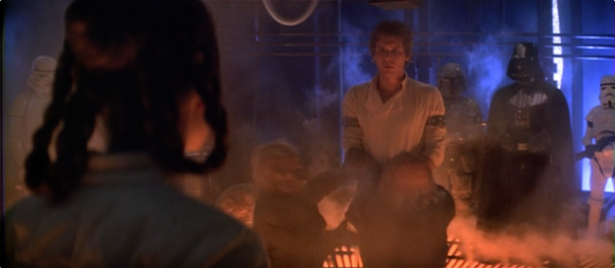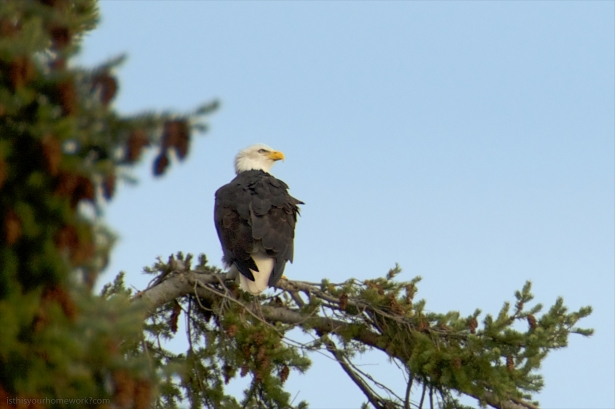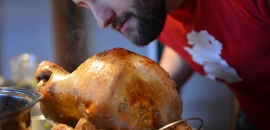Author Archive
This series of whiteboards isn’t intended to offer much help to the player who’s had much or any coaching. Instead, the aim is to teach some of the fundamentals of the game, helping beer-leaguers and the like who took up hockey at a later age. This is the third instalment, see parts one and two here:
Beer League Pro Tip (Part 1): Winger D-Zone Responsibility
Beer League Pro Tip (Part 2): Beat Every Goalie and Have Airtight Defence
In this instalment, I explain how the Centre is really a Centre-Defenceman in the Defensive Zone. Together the three D-Men function as a unit, the key part of the box-plus-one D-zone strategy. They form a defensive triangle with a strong foundation covering both sides of the net and a spearpoint that attacks the puck.
What do you think? Do these whiteboards help explain the Centre and Defencemen roles in their own zone?
This series of whiteboards isn’t intended to offer much help to the player who’s had much or any coaching. Instead, the aim is to teach some of the fundamentals of the game, helping beer-leaguers and the like who took up hockey at a later age. This is the second instalment, see parts one and three here:
Beer League Pro Tip (Part 1): Winger D-Zone Responsibility
Beer League Pro Tip (Part 3): Centre and D-Men Defensive Unit
Hopefully this series shows relative beginners where the real danger areas are in the attacking/defending zone.
It should also shine a bit of light onto the two types of saves the Goaltender has to make: Reaction and Blocking. Knowing the difference between a Reaction Save and Blocking save (and when you’ll see each) is very valuable on both Offence and Defence.
On Offence, if you can force the goalie to make more Blocking Saves, you’re going to score more. On defence, if you know where the dangerous areas are, you’re better equipped to prioritize your defence and get scored on less.
What do you think? Do these whiteboards make it a little more clear where the most dangerous area on the ice is?
This series of whiteboards isn’t intended to offer much help to the player who’s had much or any coaching. Instead, the aim is to teach some of the fundamentals of the game, helping beer-leaguers and the like who took up hockey at a later age. This is the first instalment, see parts two and three here:
Beer League Pro Tip (Part 2): Beat Every Goalie and Have Airtight Defence
Beer League Pro Tip (Part 3): Centre and D-Men Defensive Unit
A lot of time the guy who’s never played any organized hockey is thrown on the Wing and has to just figure it out for himself.
As Justin Bourne put it in a Backhand Shelf article:
Wing is the easiest position in hockey, especially in the d-zone. I mean, holy hell people, if you can’t play this position moderately well, it’s time to switch to bowling. But still, there are certain nuances in the d-zone that can make one winger more valuable than the next (outside of raw talent), so let’s go over them.
That said, teams with Wingers that don’t know where to be in the D-Zone spend most of their games in their zone, and get very little chance to generate any offense.
What do you think? Do these whiteboards make it a little more clear what the Winger role is in the defensive zone?
“I know.” Two words, famously ad-libbed by Harrison Ford after many repeated takes of the scripted “I love you too” line. Two words that evoke love far more powerfully than any hallmarkian sentiment in this or any other galaxy. In all of cinema, in all its rich and romantic history, “I know” is certainly the most romantic ad-lib. And in my estimation, “I know” is high among the most romantic lines, full stop.
From Leia’s perspective, Solo’s pursuit had seemed not motivated by love, but perhaps by a mere desire for conquest.
It is in one of the darkest moments of The Empire Strikes Back, in all of the Star Wars franchise really, when Han Solo replies with those two little words to Leia’s tearful and frighted admission of “I love you.” And in that moment we witness a breaking of character. Not merely the breaking of the fourth wall by Ford with his ad-lib, but the abandonment of a mask behind which Solo had been hiding for so long.
At first blush, it might sound in-character for Solo. Another in a long line of the snappy repartee that had characterized his and Leia’s relationship. But it was more than that. His was a naked and vulnerable return of her statement of love.
Up to that point their relationship had been adversarial, full of romantic friction. Solo had been pressing his suit with Leia, but in a ‘scruffy’ sort of way, the way a scoundrel would. From Leia’s perspective, Solo’s pursuit had seemed not motivated by love, but perhaps by a mere desire for conquest.
A whisper of breeze ruffled the airfield’s August-browned grass. The sky overhead was warm and inviting. With unlimited visibility, the bright blue canopy appeared as if it had pulled back from the earth to provide extra airspace beneath. One lone cotton-cloud lazed over the horizon. Two eagles circled effortlessly high overhead. It was a perfect day for flying.
Pilot Rod Rees strode across the lawn. A young man in the Summer of 1963, my Uncle Rod was little older than I was when I first heard the story of his maiden flight. My mother Arlene, only a girl then, saw no trace of fear as her older brother approached the field. His eyes were set, his face was determined, and his aircraft was slung confidently under his arm.
After weeks waiting for the kit to arrive, after a summer holiday spent indoors on painstaking assembly, after his fingers had become calloused from fine tooling and his lungs ravaged by glue fumes, the day had finally come for his dream to take flight.
Aircraft fuelled and pre-flight checklists completed, Rees glanced yet again at the listless pine-bough windsocks overlooking the R-Bar-Eagle farm’s upper horse paddock —newly rechristened the Galiano Island Airfield. He bent low over his aircraft and, with a high whine and a puff of blue smoke, the engine coughed to life. Rees cycled the controls and adjusted the radio’s trim knob one last time. He looked up, taking two half-steps backward.
The plane burst forward.







